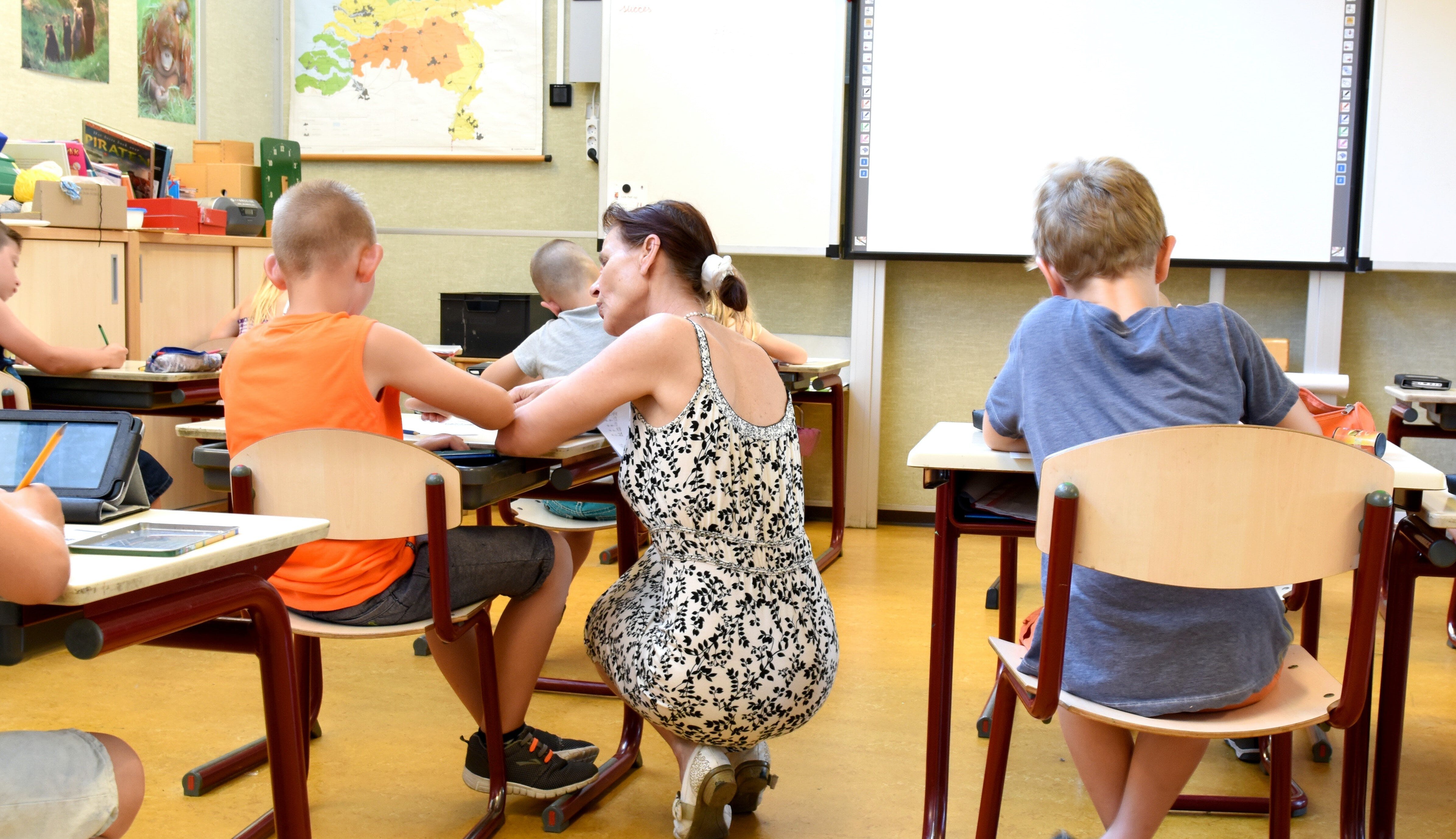Table of Contents
A nurturing environment is one of the most important things for any child to have at home. Having loving parents who support their children and model good behavior leads those children to being more resilient and successful in the future. One important fact often forgotten though is that children often spend just as much time with their teachers as they do with their parents.
This is all the more true for younger children who have the same teacher all day, but even if a teacher only sees their students once or twice a week, this is an ample amount of time to be a significant influence in their lives, especially by creating a nurturing environment for learning.
Teachers are always doing their best to provide a nurturing environment for learning, but often the stress of deadlines limits a teachers ability to model good learning behavior for their students. New research into the importance of modeling good learning behavior in order to create a good environment for learning, however, might encourage teachers to take a step back and look at how they can not just give information, but also remember to take time to learn themselves to model how best to be a lifelong student.
New Research on the Importance of a Nurturing Environment

Providing a nurturing environment for learning is fundamental for any student, but recent research shows it might be the most important for students from an underprivileged background.
A study published in the American Journal of Human Genetics found “consistent evidence that environmentally mediated parental genetic influences contribute to the intergenerational transmission of educational outcomes.” (Wang et al.) That is to say that parents were able to mediate the effects of genetics on a child’s ability to do well in school through changing the environment the child was raised in.
While genetics does play a major role in the multiple types of intelligence, this research shows that genetics is not an unchangeable prescription on how a person is to remain. This research also shows the importance of environment in shaping who a person is.
Epigenetics, the study of how environmental factors can turn on and off genes is a burgeoning field that is challenging the old assumptions that intelligence is limited to those who are naturally capable, but in reality it is rather those who have been raised to be capable. By changing certain factors in the way a child is raised, this can help to rewrite the way their mind works and help them to achieve more in their lives.
Why Teachers are Fundamental to a Nurturing Environment
While teachers don’t spend quite as much time as parents with their students, they can obviously still have a major impact on a student’s educational success. This is all the more important for students who come from a more disadvantaged background or those who seem to have less natural aptitude.
Rather than thinking that the student is a lost cause and just needs to be passed through because they will “never get it”, know that a teacher can help to rewrite that genetic blueprint a student was started with and help to mold it with their nurturing environment for learning.
Too often, teachers do what they can for the weakest students in their class, but end up focusing more on the students who are more initially capable as they show improvements more quickly. While weaker students will improve more slowly, that shouldn’t be taken as a sign that they simply can not improve. Teachers should take these types of students as a challenge to their abilities.
It’s easy to help students improve when they already have a natural aptitude for a subject, but the mark of a truly effective teacher is their ability to educate even those with no natural inclination for their subject. Even if no one in their family has ever gone to higher education or been particularly academically inclined, teachers can help to nurture growth and help to create that first generation of academic excellence. However, what are some of the ways teachers can provide this academically nurturing environment?

Research on Nurturing Learning with Various Teaching Techniques
A study conducted on second language learners tested various models for classroom environments based on various practices including praise, modeling, activities, direct correction, and explanation as well as mixing models to try to find a perfect blend. Afterwards, the students were tested to see which methods were the most successful and which ones worked best together.
The researchers found that the best mixture for a good classroom was giving them models by a native speaker and then correcting their mistakes and explaining the correct answer. (Min) While this may seem like a bit of an obvious teaching technique, the more interesting finding is that this simple seemingly old-school method beat out things like praise and student activities.
A Nurturing Environment for Learning is not a Coddling Environment
Modern best practice guides are constantly touting the importance of students completing activities themselves and being encouraged and praised as they work to keep their spirits up. While students obviously need to feel supported and safe in school to be able to learn, without clear instructions and explanations, activities are disorganized and praise may feel hollow and unearned. Students who struggle will need even clearer instructions and multiple explanations to even begin to understand a topic. They also can often see through the fake praise of teachers saying “Don’t worry, you’re doing great”.
Students know when they aren’t doing well and disingenuous praise meant to simply boost their spirits without any basis may discourage students more by showing that you’ll give praise even when they know you don’t mean it. They may feel that the teacher has given up on them and just says nice things to move the class along rather than explain again.

While obviously getting angry or belittling students will have a detrimental effect on their desire to improve themselves, fake praise may also steal their confidence as it seems to say that the teacher has given up on them ever doing an actual good job.
Instead, if a teacher shows the student that they are worth the time by calming and kindly explaining topics multiple times in multiple ways, the student will be more likely to reciprocate the effort. Though they still will struggle, the persistent effort and lack of fake praise will lead the student to understand that level headed consistency is the way to progress and they will be more likely to see that they are able to improve if they dedicate themselves and listen well to models, attempt to copy and take critical feedback.
Teachers Should Model Good Approaches to Learning
Another thing to consider is that these students may simply not have any good examples in their friends or parents of what good learning constitutes. Teachers need to step into the role of not only giving knowledge, but also modeling the best ways to approach new topics. One way this can be done is by giving teacher created examples of an assignment when assigning a project. Rather than just having students read the model and glean what they can from it, the teacher should go through their entire process with the students.
By explaining step by step what they did as they go along in the project, it gives students a concrete example of how to act on the instructions of the assignment and gives another chance to clear up misconceptions students may have had as they read.
Google Docs has a document history mode where teachers can take students through their work step by step showing exactly what good work looks like at each step of the process, from brainstorming to outlining and drafting. This same tool can be used to review student’s work history and then give them clear feedback on which steps they did well and which could be improved to end up at a better final product.
Modern tools give teachers a plethora of practical ways to document and organize their lesson materials for students to be able to utilize, but another fun way to be a good model is for teachers to actually do some of the activities they assign to students along with them. For example, if students are to be giving a presentation on an independent reading book or present their findings on a question based on their research into a country’s economic models, the teacher can be the first to present.
The teacher can model what a good analysis and review of their independent reading book looks like and help students to hear the register of language that is appropriate for the task. The teacher could increase engagement from the students by allowing them to assign the topic that the teacher is to research. Then when the teacher reports their findings, students have chosen what they want to hear about and will be more interested in the topic and seeing what the teacher has come up with, especially if they have tried to find a particularly difficult topic to challenge the teacher.
Teachers can step up to the challenge and improve themselves and their students by modeling what good learning looks like. Teachers can also share their research into good teaching practice to help students learn more about how they learn and understand more why their teacher does the things that they do, helping to strengthen the relationship and build a nurturing environment for learning.
Want more like this? Make Lab to Class a part of your weekly professional development schedule by subscribing to updates below.
References
Min, Hui-Tzu. “Effect Of Teacher Modeling And Feedback On EFL Students’ Peer Review Skills In Peer Review Training”. Journal Of Second Language Writing, vol 31, 2016, pp. 43-57. Elsevier BV, doi:10.1016/j.jslw.2016.01.004.
Wang, Biyao et al. “Robust Genetic Nurture Effects On Education: A Systematic Review And Meta-Analysis Based On 38,654 Families Across 8 Cohorts”. The American Journal Of Human Genetics, 2021. Elsevier BV, doi:10.1016/j.ajhg.2021.07.010.




